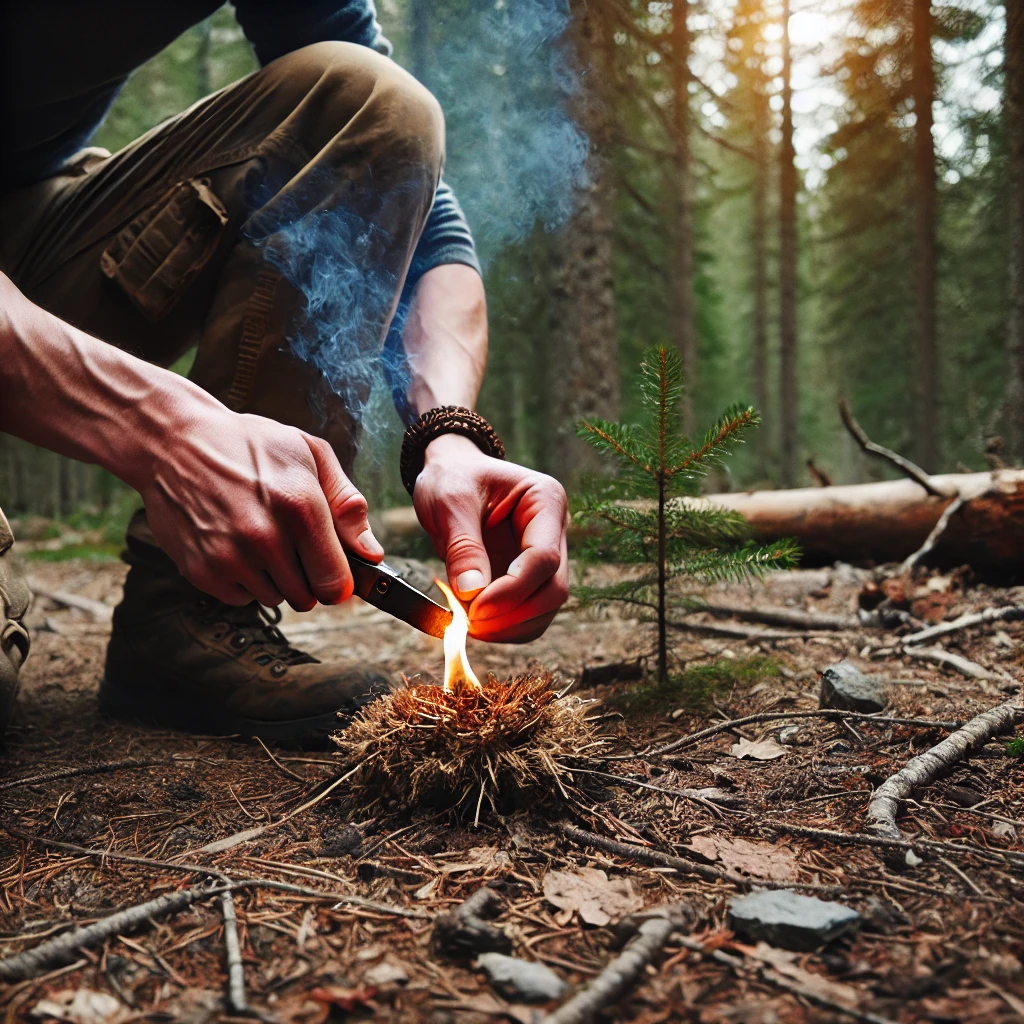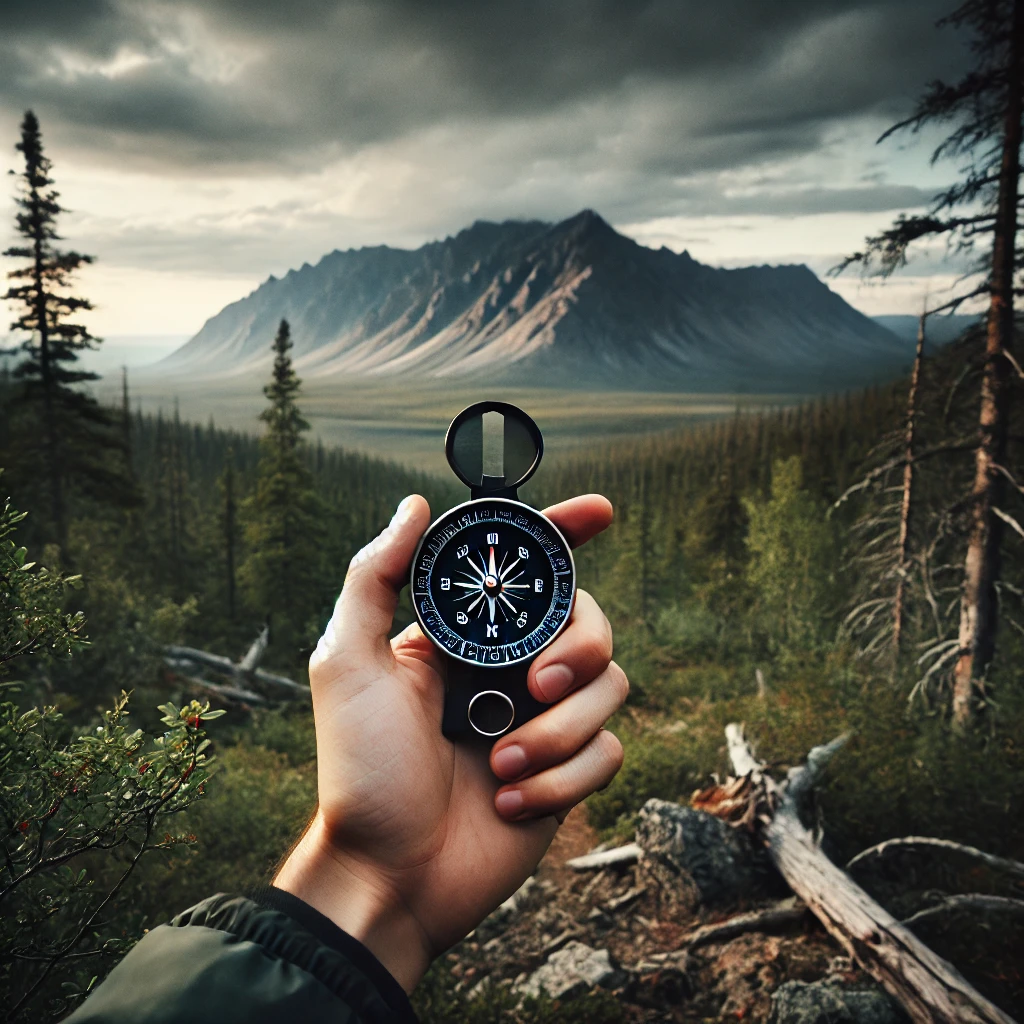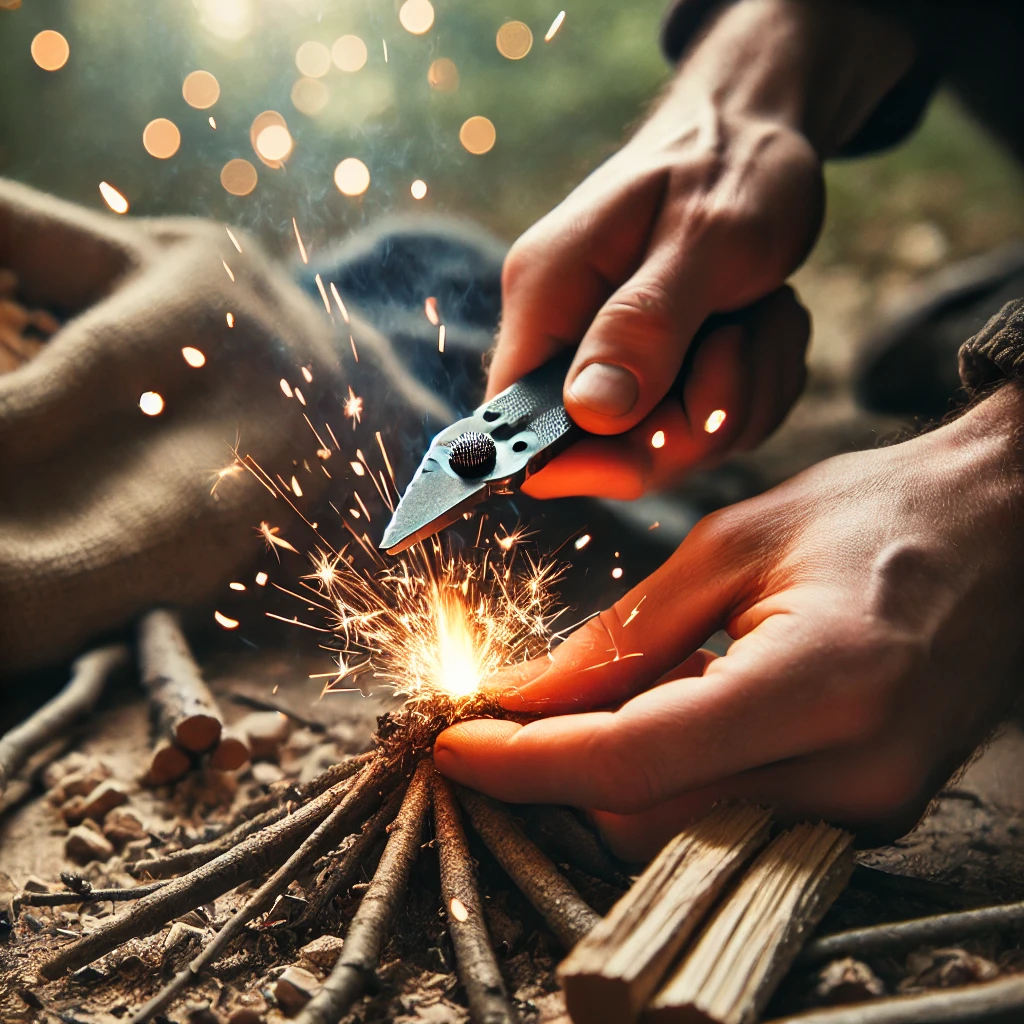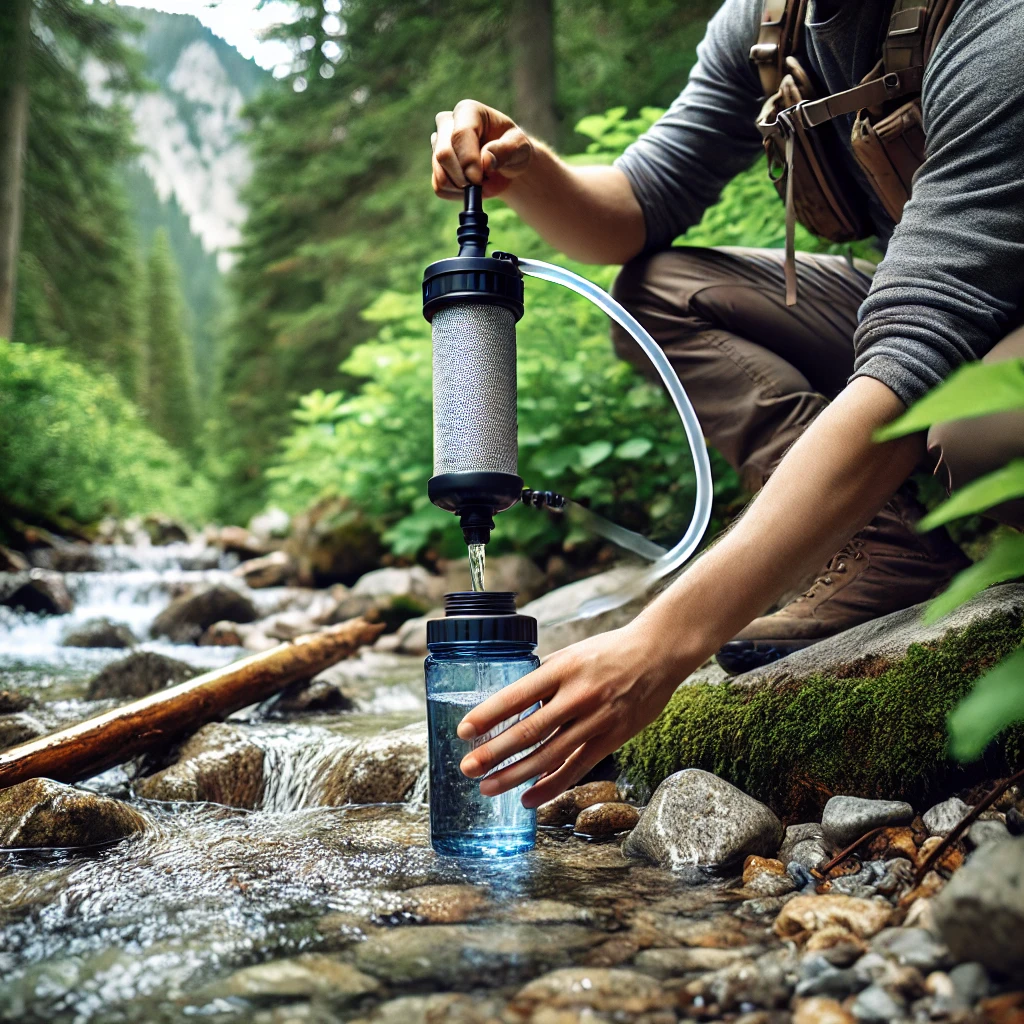Essential Survival Skills Everyone Should Know – 2024
Introduction:
In a world where unexpected challenges can arise, having basic survival skills can be the difference between life and death. Whether you find yourself lost in the wilderness, stranded in an emergency situation, or even facing a natural disaster, knowing how to stay alive and take care of your basic needs is critical. Here’s a comprehensive guide to the essential survival skills everyone should know.
1. Finding and Purifying Water
Water is the most critical resource for survival, as the human body can only survive for about three days without it. In any survival scenario, securing a clean water source is a top priority. Here’s what you need to know:
- Identifying Water Sources: Look for natural water sources such as streams, rivers, lakes, or springs. In drier environments, you may need to dig for water near dried riverbeds or collect dew from plants using absorbent cloths.
- Purifying Water: Drinking untreated water can lead to serious illnesses from bacteria, parasites, or viruses. You can purify water by:
- Boiling: Boil water for at least one minute (three minutes at higher altitudes).
- Water Filters: Portable water filters are effective at removing contaminants.
- Chemical Treatment: Water purification tablets or drops (e.g., iodine or chlorine) can make water safe to drink.
- Solar Still: In arid environments, use a solar still to collect clean water from condensation.
2. Building Shelter
Exposure to harsh weather conditions—whether it’s extreme heat, cold, or rain—can be life-threatening. Building a shelter is essential to protect yourself from the elements.
- Natural Shelters: If time or resources are limited, seek natural shelters such as caves, overhangs, or large trees with dense foliage.
- Improvised Shelters: Using available materials, you can construct different types of shelters:
- Debris Hut: Use branches, leaves, and grass to create an insulating layer. It’s ideal for cold environments.
- Lean-To Shelter: Use a sturdy branch or fallen tree trunk as a ridgepole, and then lean other branches against it. Cover the structure with leaves or tarps to protect yourself from the wind.
- Snow Shelter (Quinzhee or Igloo): If trapped in a snow-covered area, you can build a shelter out of compacted snow to insulate against freezing temperatures.

You May Also Like: Hurricanes and Typhoons: The Deadliest Storms on Earth
3. Starting a Fire
Fire provides warmth, protection, light, and the ability to cook food and purify water. Being able to start a fire in various conditions is a critical skill.
- Fire Starting Methods:
- Matches/Lighters: Always carry waterproof matches or a lighter in your emergency kit.
- Fire Starters: Fire starters such as magnesium blocks, flint and steel, or ferro rods are invaluable in wet or windy conditions.
- Friction-Based Methods: In an emergency, you can use friction-based techniques like the bow drill or hand drill. These require skill and practice but can save your life if you have no other options.
- Tinder and Kindling: Use dry, easily combustible materials for tinder such as dry grass, leaves, or bark. Kindling (small sticks and twigs) will help sustain the flame until larger logs can be added.
4. Navigating Without a Map or Compass
Getting lost can turn a minor inconvenience into a dangerous situation. Knowing how to navigate without a map or compass can help you find your way to safety.
- Using the Sun: In the Northern Hemisphere, the sun rises in the east and sets in the west. If you need to find a general direction, observe the sun’s position. At noon, the sun will be due south.
- Using the Stars: At night, you can use the North Star (Polaris) to find north in the Northern Hemisphere. Find the Big Dipper constellation, and follow the “pointer stars” at the end of the bowl to locate Polaris.
- Natural Landmarks: Use natural landmarks such as mountains, rivers, or coastlines to orient yourself.
5. Foraging for Food
While the human body can survive for weeks without food, energy levels will diminish quickly without sustenance. Knowing how to find and identify edible plants, insects, and animals can provide the necessary calories for survival.
- Plants: It’s critical to know which plants are safe to eat. Many plants are toxic and can cause serious illness. As a general rule, avoid plants with milky sap, thorns, or bitter tastes. Learn to identify wild edibles in your region, such as berries, nuts, or greens.
- Insects: Insects are a great source of protein in a survival situation. Grasshoppers, ants, and crickets are generally safe to eat once cooked.
- Trapping and Fishing: If you have the knowledge and tools, trapping small animals or fishing can provide larger sources of protein. Use makeshift fishing lines or simple traps like snares.
6. First Aid Skills
In a survival situation, injuries can happen. Being able to perform basic first aid is crucial to preventing infections and treating wounds.
- Treating Wounds: Clean cuts and abrasions with clean water and disinfectants if available. Apply bandages or, in a pinch, use clean cloth strips to cover the wound and prevent infection.
- Immobilizing Fractures: If you suspect a broken bone, immobilize the limb using splints made from sticks or other rigid materials, and secure them with cloth or rope.
- Treating Hypothermia and Heatstroke:
- For hypothermia, move the person to a dry shelter, remove any wet clothing, and warm them gradually with blankets or body heat.
- For heatstroke, move the person to a cool area, provide hydration, and cool them with wet cloths.
7. Signaling for Help
If you’re lost or in an emergency situation, knowing how to signal for help can increase your chances of being rescued.
- Fires: A smoke signal is a universal distress signal. Three fires arranged in a triangle is an internationally recognized distress signal. Use green leaves or damp materials to create thick smoke.
- Mirrors and Flashlights: Reflective surfaces such as mirrors can catch the attention of search parties during the day. At night, use a flashlight to flash an SOS signal (three short flashes, three long flashes, and three short flashes).
- Whistles and Noise: A whistle can be heard from long distances, and it’s a useful tool to carry in any survival kit. Loud noises, like banging rocks together or shouting, can also attract attention.
8. Psychological Resilience
Survival is as much a mental game as it is a physical one. Panic, fear, and despair can overwhelm anyone in a life-threatening situation. Cultivating psychological resilience can help you stay calm, focused, and determined.
- Stay Positive: A positive mindset can help you think clearly and find solutions to problems. Focus on small, achievable goals, such as building a shelter or starting a fire.
- Practice Patience: In survival scenarios, things rarely go according to plan. Patience is necessary for overcoming challenges like waiting for rescue or catching food.
- Mental Toughness: The ability to endure physical discomfort, hunger, and fatigue requires mental fortitude. Remind yourself of past hardships you’ve overcome, and believe in your ability to survive.
9. Making a Survival Kit
Preparation is key to survival. A well-stocked survival kit can provide you with the tools and resources you need to manage in an emergency.
- Basic Items:
- Firestarter (matches, lighter, or ferro rod)
- Knife or multi-tool
- Water purification tablets or filter
- Emergency blanket or tarp
- First aid kit
- Paracord (for building shelters or trapping)
- Flashlight and extra batteries
- Whistle
- Non-perishable food and energy bars
Conclusion
Knowing these essential survival skills can prepare you for a variety of emergency scenarios, from being lost in the wilderness to facing natural disasters. Practicing these skills regularly will ensure that you’re ready to face the unexpected, stay safe, and, most importantly, stay alive.
Also Visit: How to Choose the Best Insurance Plan for Your Family




2 comments